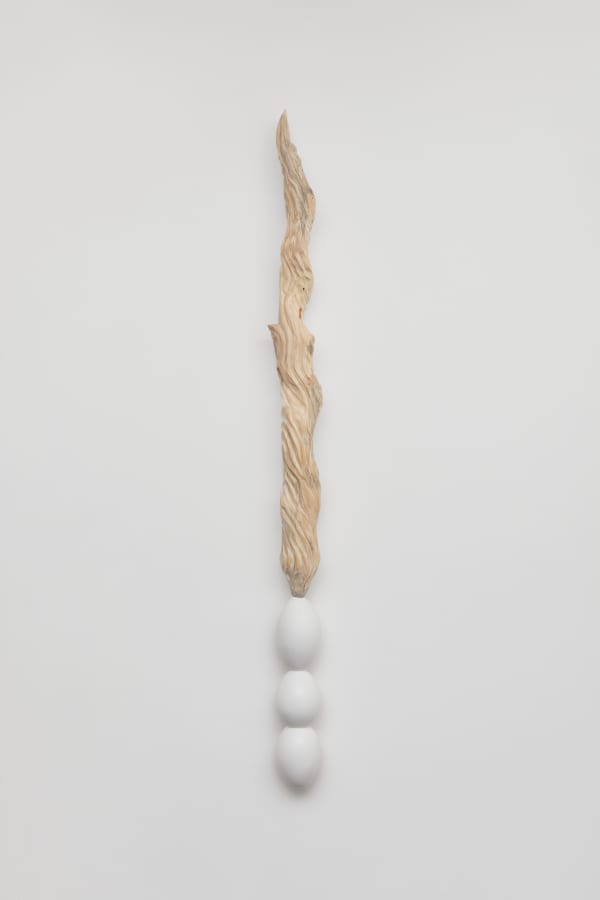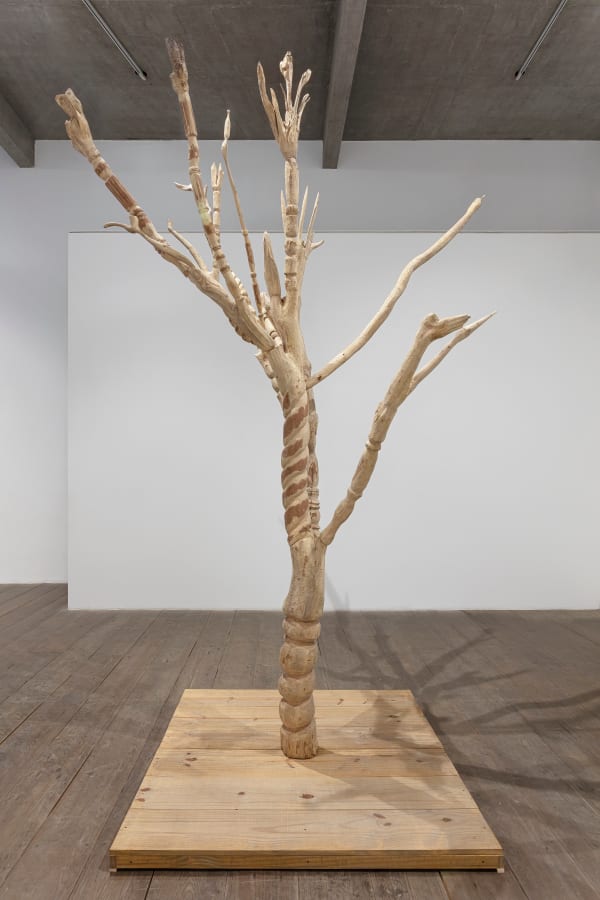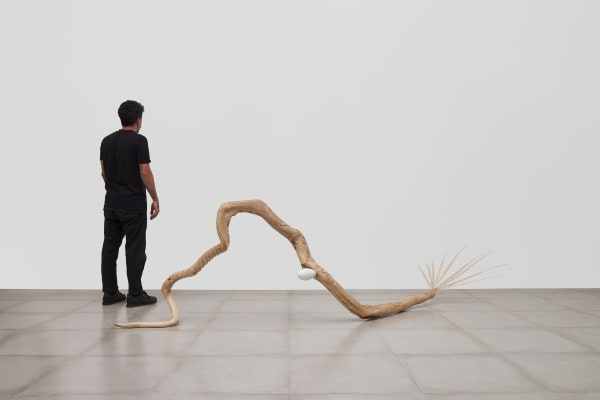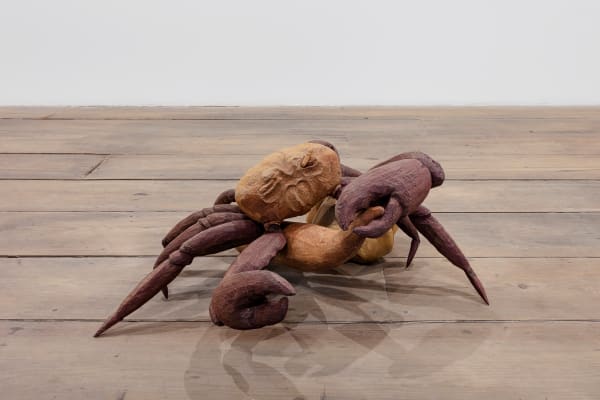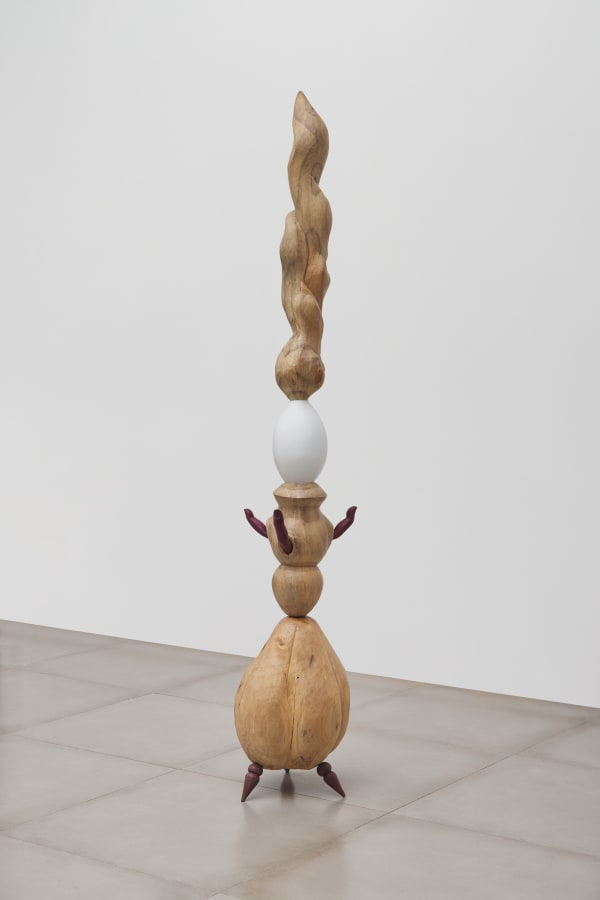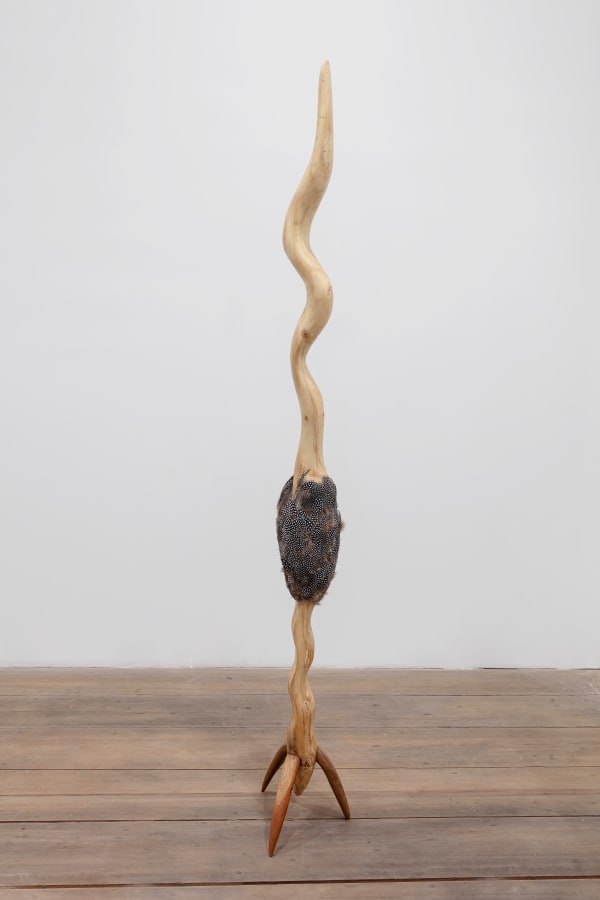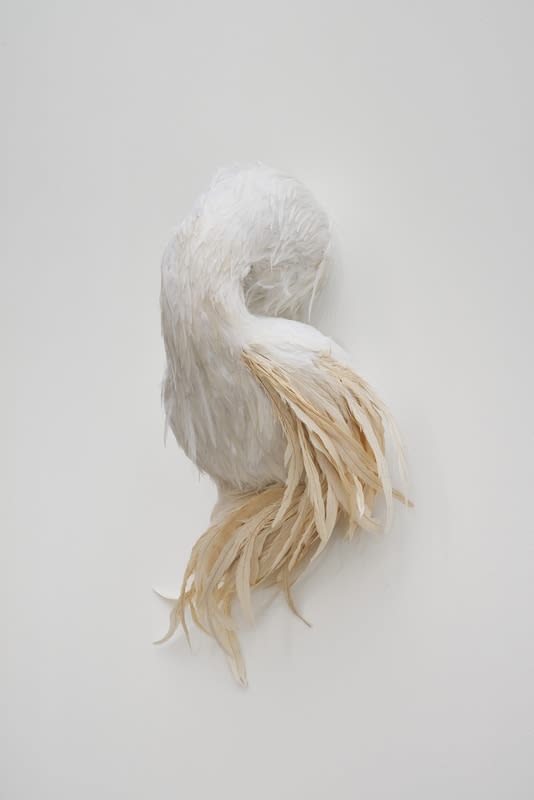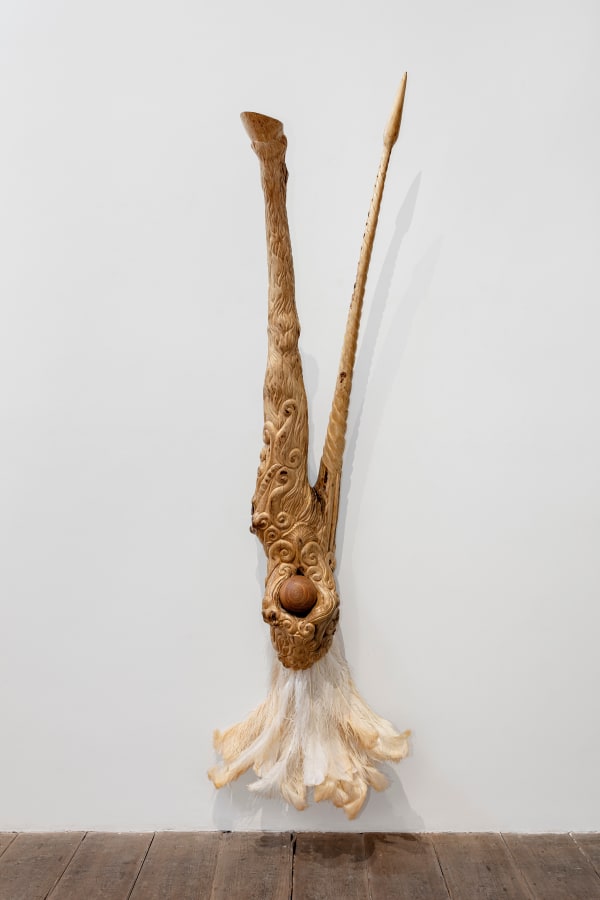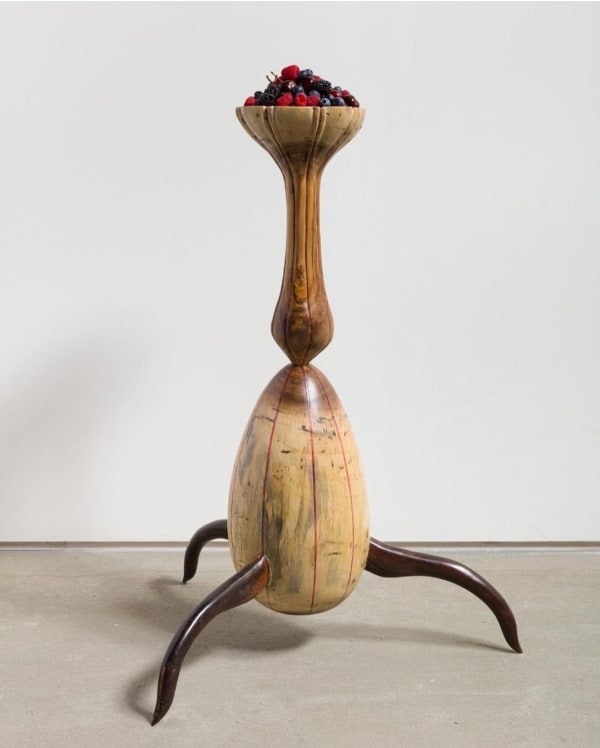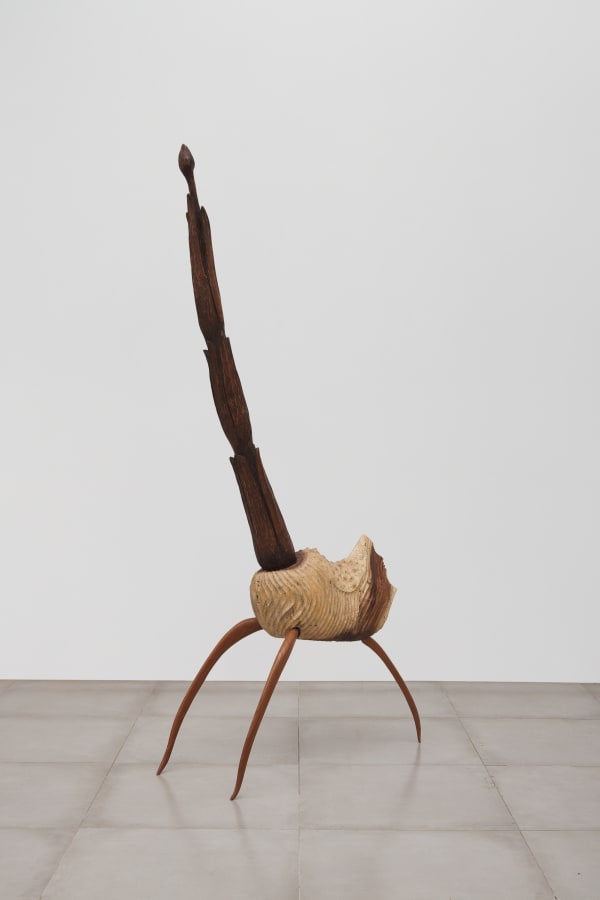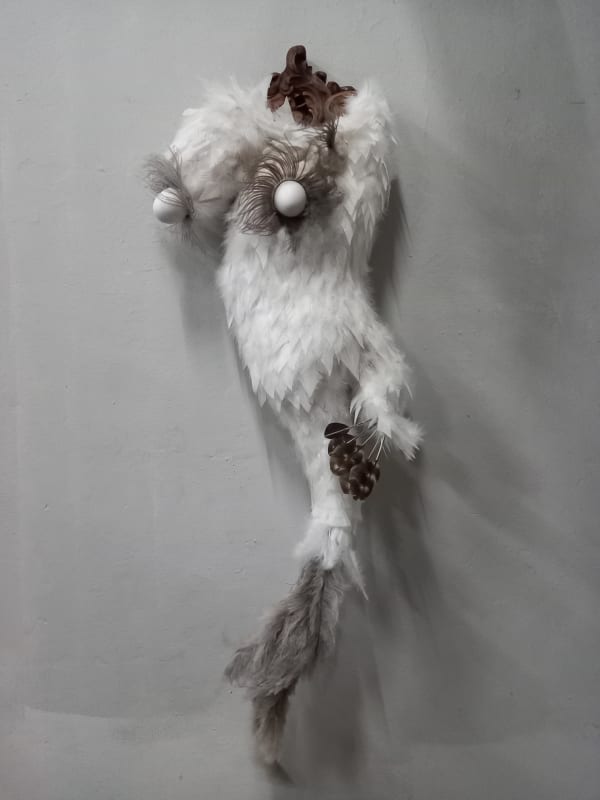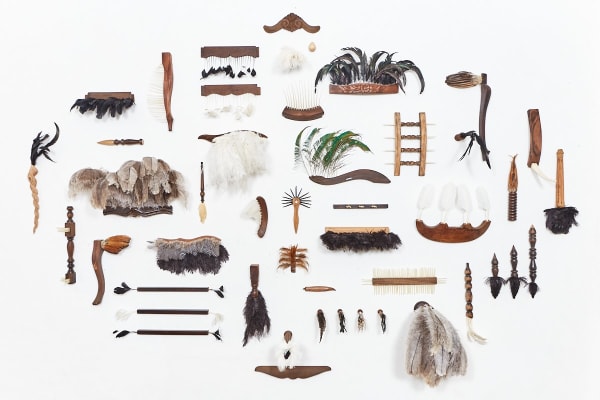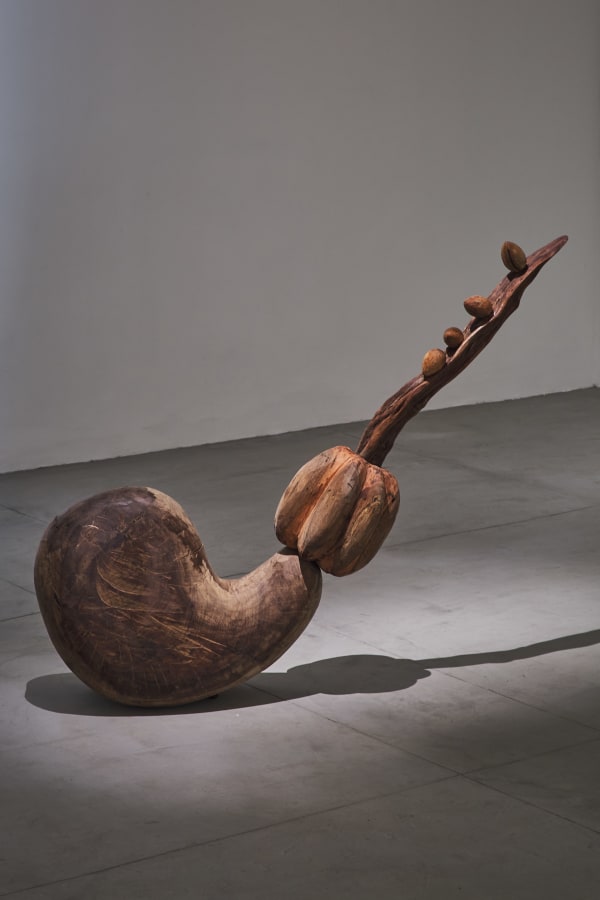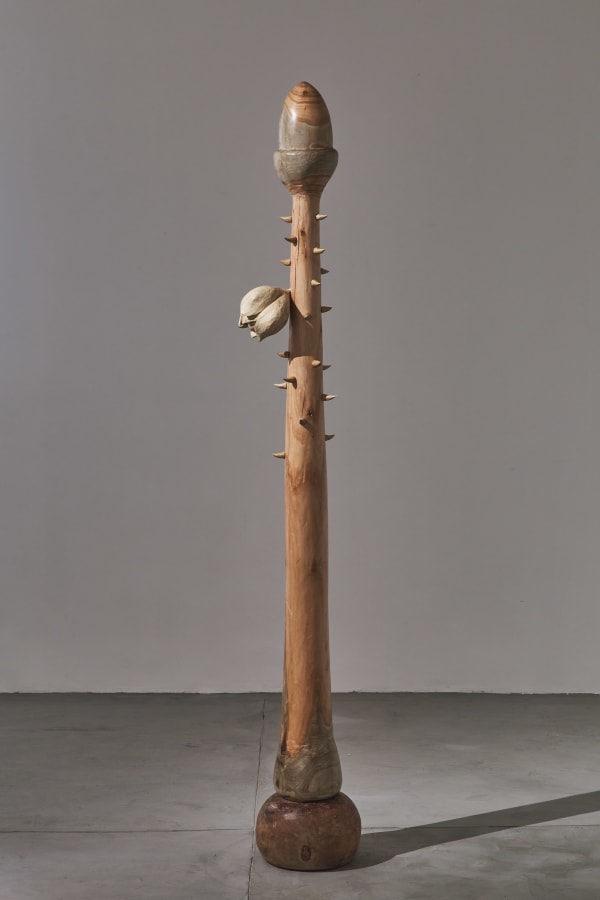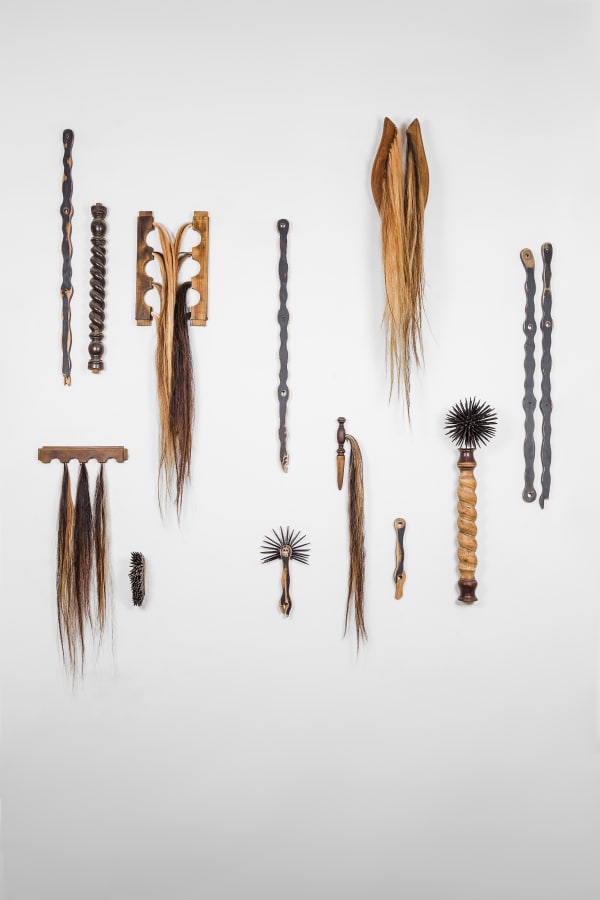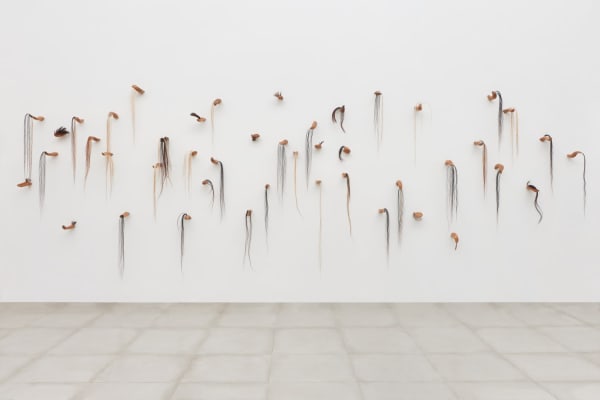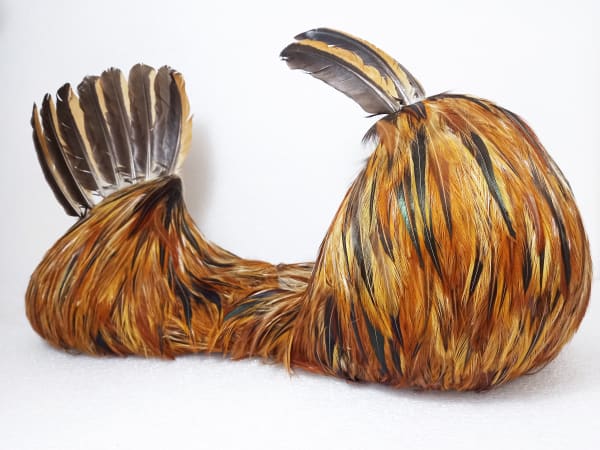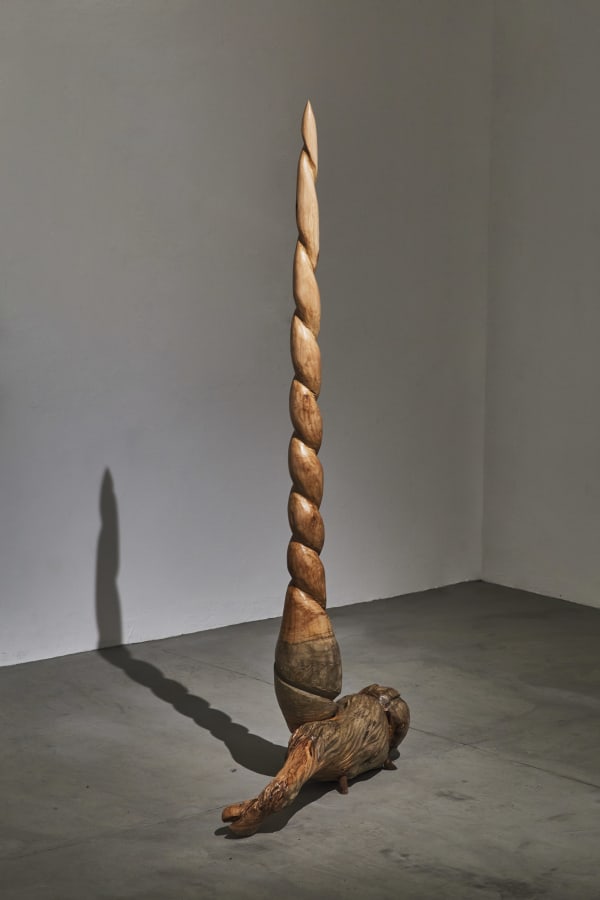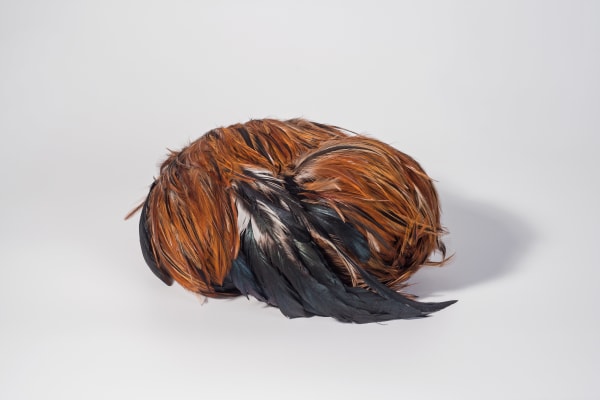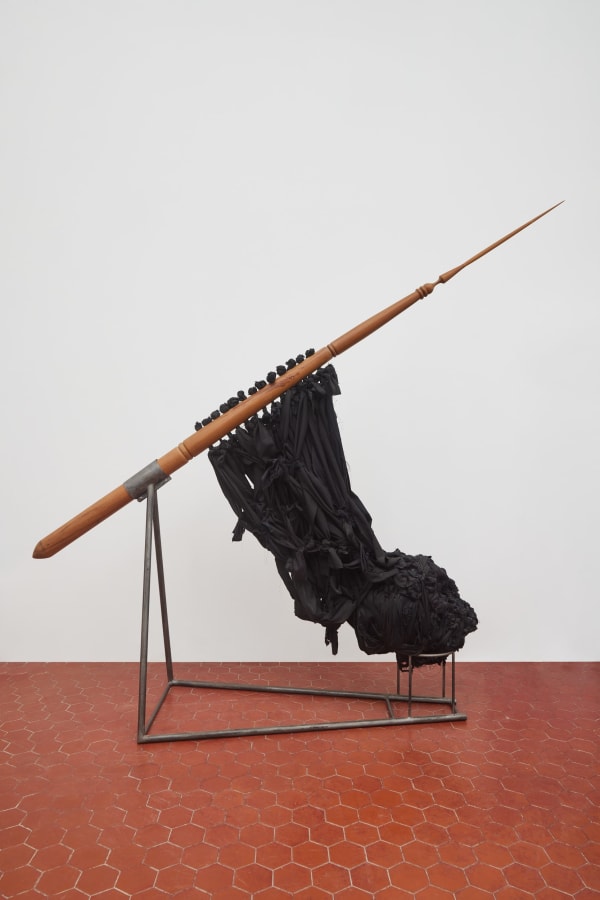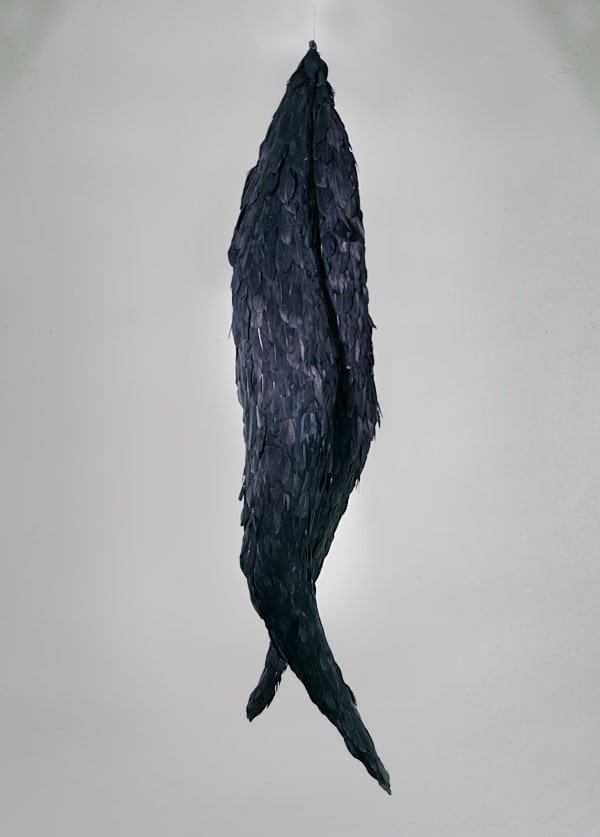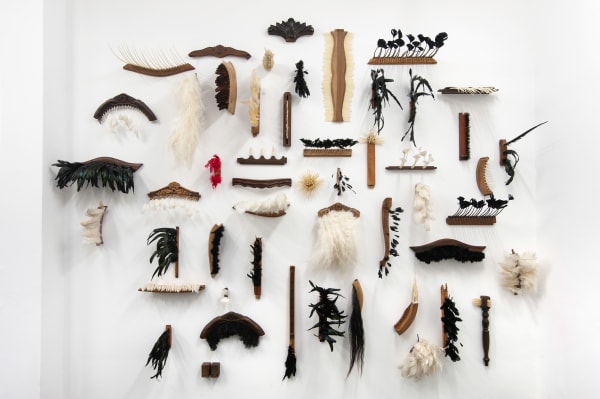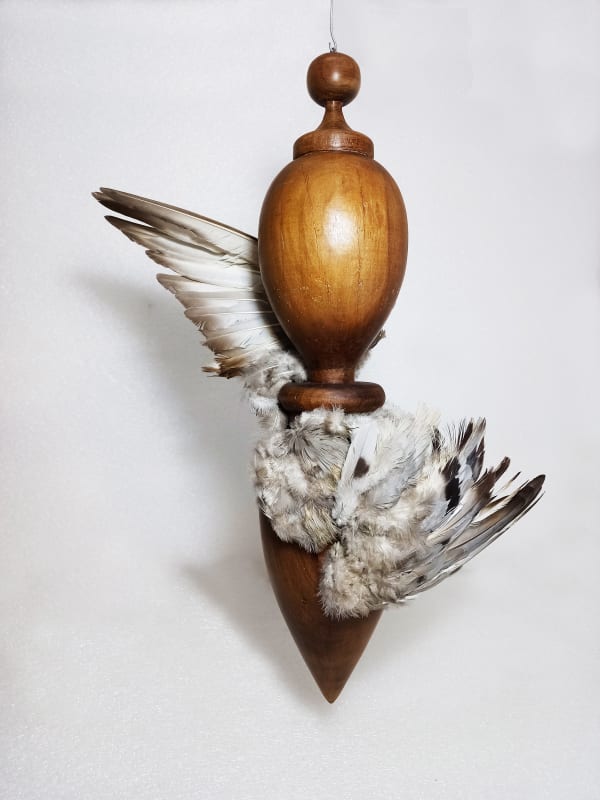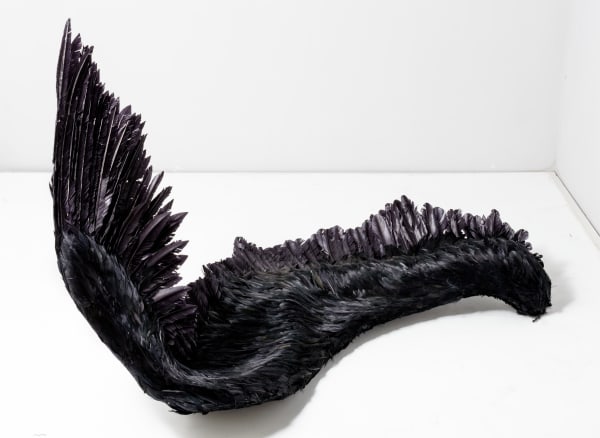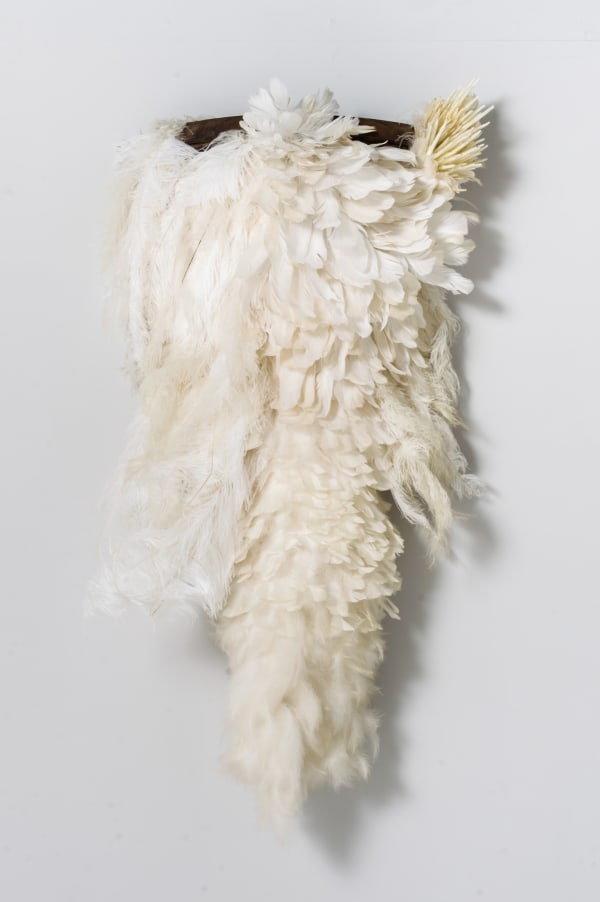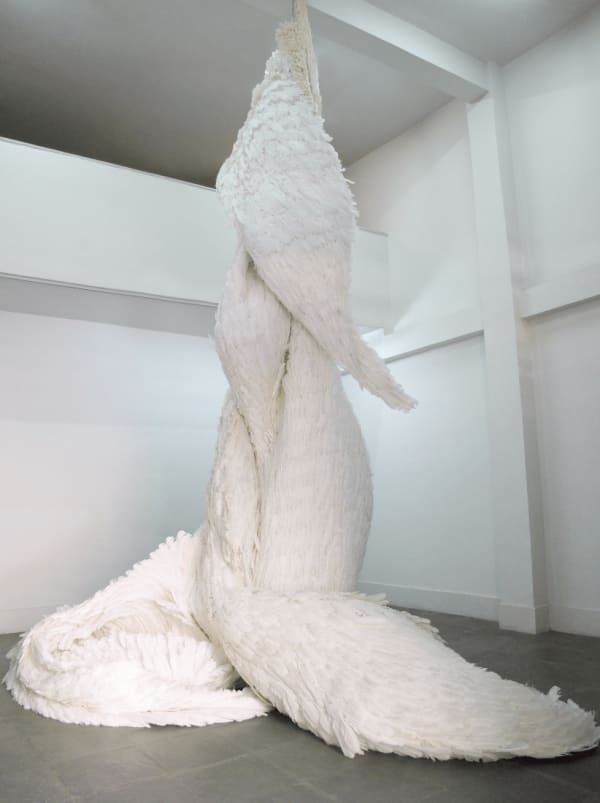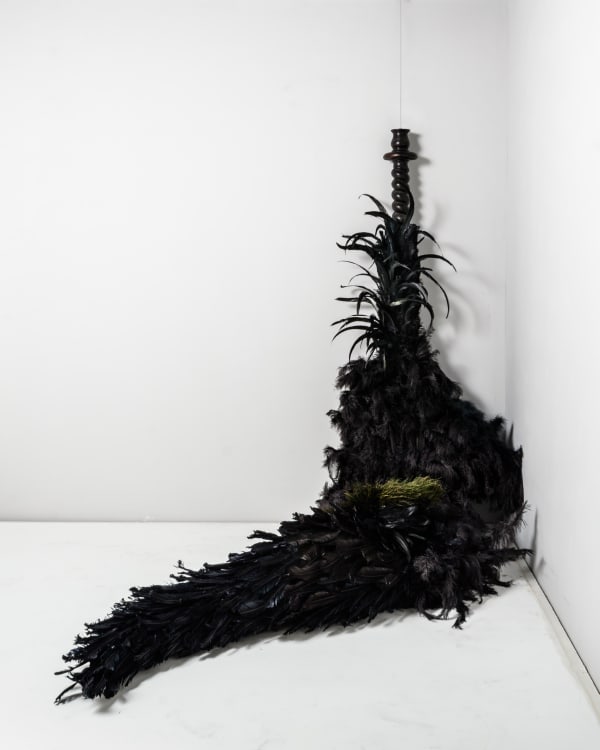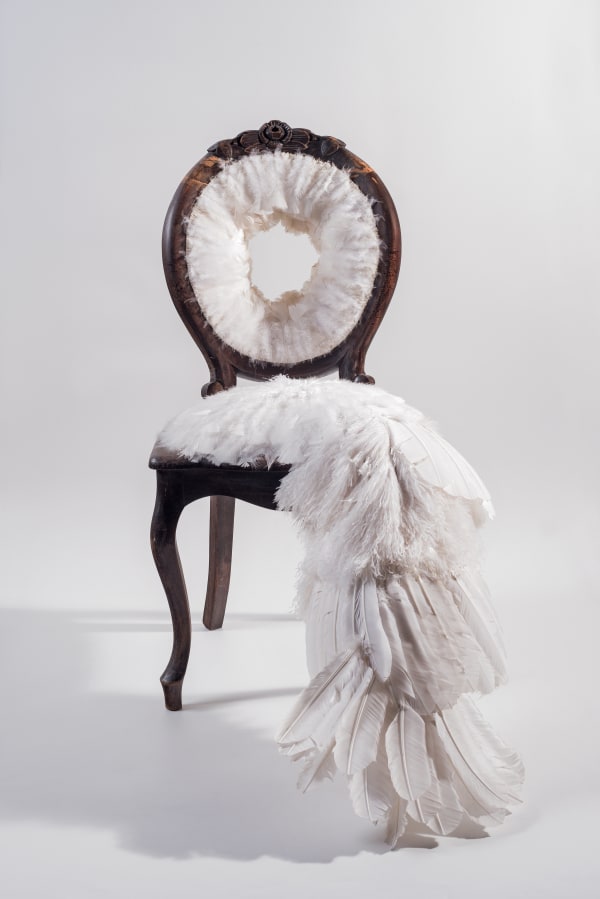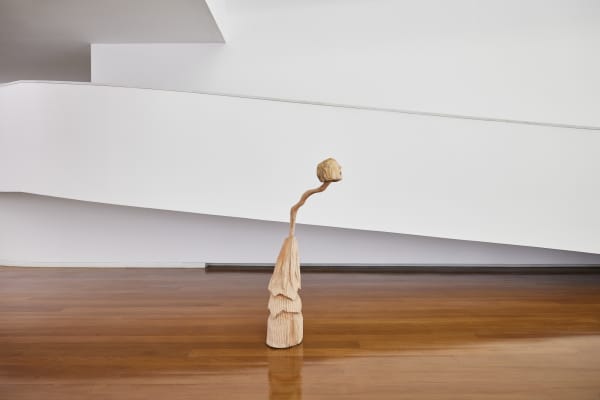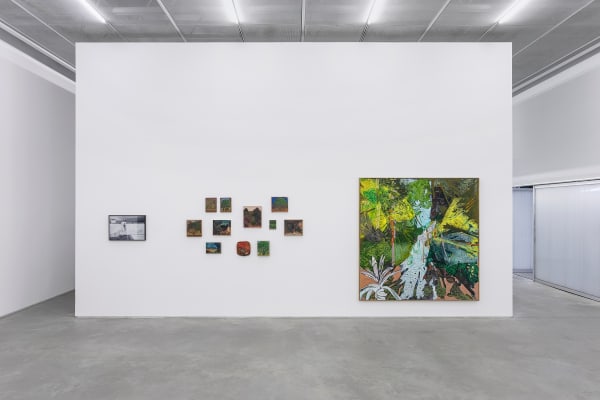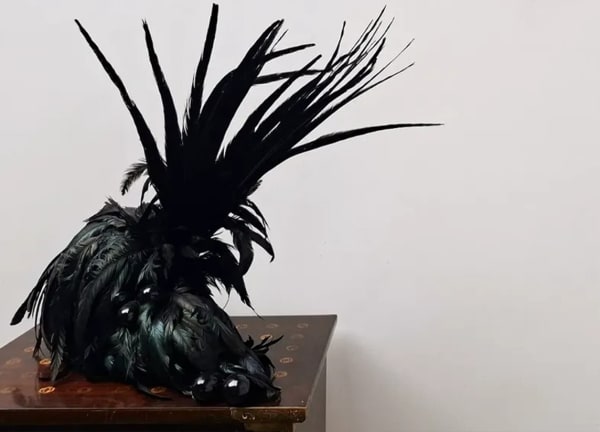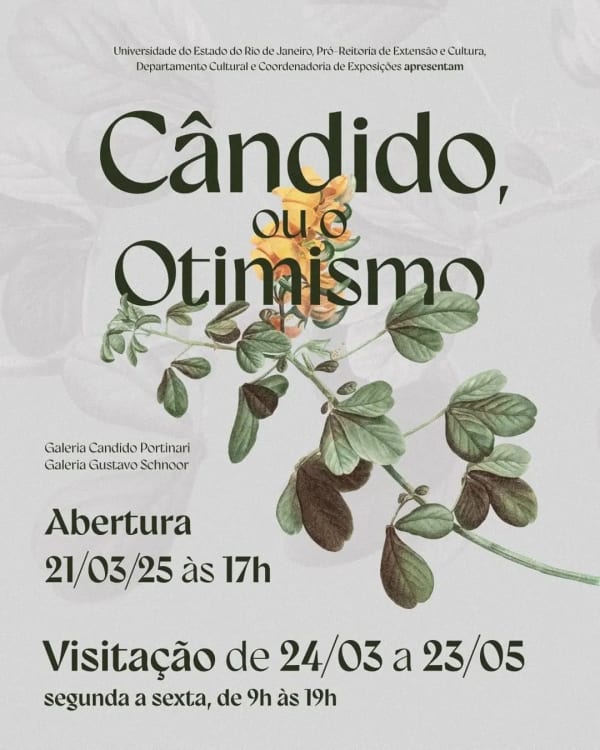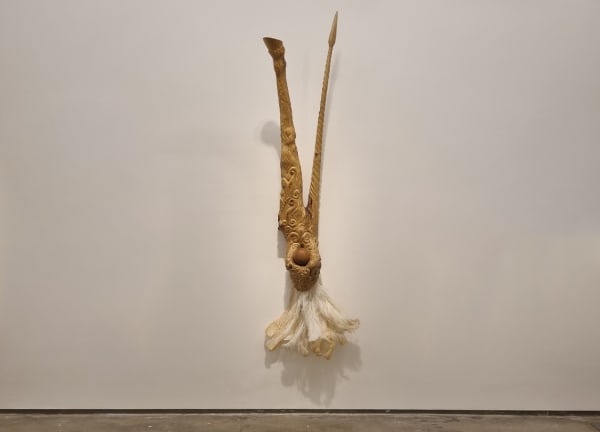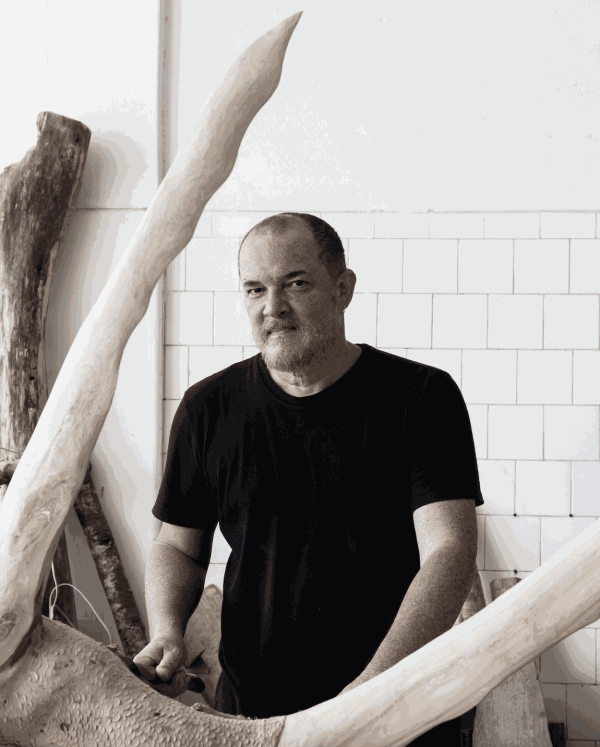Zé Carlos Garcia
Zé Carlos Garcia studied sculpture at the School of Fine Arts of the Federal University of Rio de Janeiro, attended the Visual Arts School at Parque Lage. Zé Carlos Garcia’s sculptures present themselves as uncanny shapeshifters that can recombine their members to conjure up different species of insect, or transform pieces of furniture by cloaking them in plumage. This adding-on creates hybrids that not only preserve the meanings of their constituent parts, but also generate morbid curiosities out of distortions of their natures. Garcia seems to want to evince a certain perversity in his audience, caught somewhere between revulsion and fascination, playing on their voyeurism before such mangled bodies, however fictional they may be. The possibility of recreating the world through forms initially established by Aesthetics, that is, not proposed as “given” by nature, impelled him into a line of research that led to the sculptural construction of “birds”, the redefinition of “insects” and the "busts" sculpted from sedimentary stones that do not have a definite shape. The symbolism of the discourses of power that mark the construction of the history of humanity is also present in Zé Garcia's research, as in the "busts", with his notion of ephemerality and ruin, and in the horsehair flags and wooden stakes which refer us to masts, equestrian sculptures and obelisks, landmarks of conquest and narratives of territories. The “construction” of his work originates from existing bodies, sometimes dead, static, found, natural or artificial, and generates objects – beings – under the sign of sculpture. Parts and fragments of antique furniture associated with carnival plumes and feathers are arranged to create hybrids with aesthetic and allegorical power. His sculptures go in the opposite direction to the works created for posterity and executed in consistent materials, dialoguing with the dimension of eternity and ruin, with the construction of an ideal and the loss of power. The artist therefore suggests a discussion with the body as centerpiece – be it animal, human or sculptural – and experience as voluntary action that alters the landscape, undergoing constant morphological change, also through the addition of new elements.
-
 Monada , 2025Mais detalhes
Monada , 2025Mais detalhes -
 luz no 03, 2024Mais detalhes
luz no 03, 2024Mais detalhes -
 chorando pitangas, 2023Mais detalhes
chorando pitangas, 2023Mais detalhes -
 caninana, 2023Mais detalhes
caninana, 2023Mais detalhes -
 feira paisagem, 2023Mais detalhes
feira paisagem, 2023Mais detalhes -
 oferenda, 2023Mais detalhes
oferenda, 2023Mais detalhes -
 vela no 02, 2023Mais detalhes
vela no 02, 2023Mais detalhes -
 torto, 2023Mais detalhes
torto, 2023Mais detalhes -
 dragão, 2023Mais detalhes
dragão, 2023Mais detalhes -
 fortuna, 2022Mais detalhes
fortuna, 2022Mais detalhes -
 morro e vivo, 2022Mais detalhes
morro e vivo, 2022Mais detalhes -
 março, 2021Mais detalhes
março, 2021Mais detalhes -
 Luto Tropical II, 2021Mais detalhes
Luto Tropical II, 2021Mais detalhes -
 caramujo, 2021Mais detalhes
caramujo, 2021Mais detalhes -
 porto da folha, 2021Mais detalhes
porto da folha, 2021Mais detalhes -
 untitled , 2020Mais detalhes
untitled , 2020Mais detalhes -
 série língua (painel), 2019-2023Mais detalhes
série língua (painel), 2019-2023Mais detalhes -
 duas cabeças, 2019Mais detalhes
duas cabeças, 2019Mais detalhes -
 o bom cabrito não berra, 2019Mais detalhes
o bom cabrito não berra, 2019Mais detalhes -
 untitled , 2018Mais detalhes
untitled , 2018Mais detalhes -
 besta quadrada, 2017Mais detalhes
besta quadrada, 2017Mais detalhes -
 pássaro, 2017Mais detalhes
pássaro, 2017Mais detalhes -
 Luto Tropical I, 2017Mais detalhes
Luto Tropical I, 2017Mais detalhes -
 prumo, 2014Mais detalhes
prumo, 2014Mais detalhes -
 alísio, 2012Mais detalhes
alísio, 2012Mais detalhes -
 untitled , 2012Mais detalhes
untitled , 2012Mais detalhes -
 gira, 2012Mais detalhes
gira, 2012Mais detalhes -
 pássaro, 2010Mais detalhes
pássaro, 2010Mais detalhes -
 cadeira, 2009Mais detalhes
cadeira, 2009Mais detalhes
Zé Carlos Garcia (Born in 1973, Aracaju, Brazil. Lives and works in Rio de Janeiro, Brazil). He has a graduate degree in sculpture by Escola de Belas Artes of Universidade Federal do Rio de Janeiro, Rio de Janeiro, Brazil; besides teaching degree in artistic education by Universidade Salgado de Oliveira, Niterói, Brazil. He also had attended courses at Escola de Artes Visuais do Parque Lage, Rio de Janeiro, Brazil. Solo exhibitions: Escultura Cega, Galeria Marilia Razuk, São Paulo, Brazil (2023); Grande Circo Floresta, Portas Vilaseca Galeria, Rio de Janeiro, Brazil (2021); Torto, Cassia Bomeny Galeria, Rio de Janeiro, Brazil (2018); Tropical, Espaço Saracura, Rio de Janeiro, Brazil; Do pó ao pó, Galeria do Lago, Museu da República, Rio de Janeiro, Brazil (2017); Ganimedes, Zipper Galeria, São Paulo, Brazil (2016); Finca, Amarelonegro Arte Contemporânea, Rio de Janeiro, Brazil (2015); Prumo, Memorial Meyer Filho, Florianópolis, Brazil (2014); Jogo, Centro Municipal de Artes Hélio Oiticica, Rio de Janeiro, Brazil (2013); PET, Espaço Cultural Municipal Sérgio Porto, Rio de Janeiro, Brazil (2012); and Hereditários, DUREX Arte Contemporânea, Rio de Janeiro, Brazil (2010). Selected group exhibitions: Rio de Corpo e Alma, Museu Histórico da Cidade, Rio de Janeiro, Brazil; 14ª Bienal do Mercosul: Estalo, Porto Alegre, Brazil (2025); NISE: a revolução pelo afeto, Centro Cultural Banco do Brasil, Brasília/Sesc Sorocaba, Sorocaba, Brazil; Ainda Viva, Casa de Cultura do Parque, São Paulo, Brazil; Ensaio sobre paisagem, Instituto Inhotim, Brumadinho, Brazil (2024); Passeio Público: memórias e imaginações, Caixa Cultural Rio de Janeiro, Rio de Janeiro, Brazil; 22ª Bienal Sesc Vídeobrasil, Sesc 24 de maio, São Paulo, Brazil (2023); NISE: a revolução pelo afeto, Sesc Belenzinho, São Paulo, Brazil; Independência e Vida, Biblioteca Mário de Andrade, São Paulo, Brazil; NISE: a revolução pelo afeto, Centro Cultural Banco do Brasil, Belo Horizonte, Brazil (2022); NISE: a revolução pelo afeto, Centro Cultural Banco do Brasil, Rio de Janeiro, Brazil; Imagens que não se conformam, Museu de Arte do Rio, Rio de Janeiro, Brazil (2021); II Bienal do Barro, Museu do Barro, Caruaru, Brazil; Inundação, Museu do Pontal, Rio de Janeiro, Brazil; Concerto para pássaros, Goethe-Institut, Salvador, Brazil; Manjar: beleza e devastação ou eterno retorno, Solar dos Abacaxis, Rio de Janeiro, Brazil; Luto Tropical, Pasto Galeria, Buenos Aires, Argentina (2019); O Tempo e a Gravura no Espaço, FAMA Museu – Fábrica de Arte Marcos Amaro, Itu, Brazil; Busan Biennale: Divided we Stand, The Former Bank of Korea, Busan, South Korea; Você sonha com o quê? A Flor Mohole e outras fábulas, Galeria Luisa Strina, São Paulo, Brazil; Horse Takes King, with Laura Lima, Fondazione Prada, Milan, Italy (2018); Bestiário, Centro Cultural São Paulo, São Paulo, Brazil; Trienal Frestas de Artes, Sesc Sorocaba, Sorocaba, Brazil; A Room and a Half, with Laura Lima, Ujazdowski Castle Centre for Contemporary Art, Warsaw, Poland; Nuit Blanche Monaco, Larvotto beach, Monaco; Depois do Futuro, Escola de Artes Visuais do Parque Lage, Rio de Janeiro, Brazil (2016); Tórrido, Espacio Odeón, Bogota, Colombia (2015); Materia, Casa Hoffmann, Bogota, Colombia (2014); Criaturas Imaginárias, Museu do Pontal, Rio de Janeiro, Brazil; Redemptive glimpses from the future world, Musterzimmer, Berlin, Germany (2013); From The Margin to The Edge: Brazilian art and design in the 21st Century, Somerset House, London, England (2012); Nova Escultura Brasileira: herança e diversidades, Caixa Cultural Rio de Janeiro, Rio de Janeiro, Brazil (2011); among others. Awards: Award Arte Sostenible ARCO Madrid Six Senses Ibiza, Feria ARCO, Madrid, Spain (2023); and shortlisted to Prêmio PIPA, Rio de Janeiro, Brazil (2018). Public collections: Pinacoteca do Estado de São Paulo, São Paulo, Brazil; Instituto Inhotim, Brumadinho, Brazil; Museu de Arte do Rio, Rio de Janeiro, Brazil; e FAMA Museu – Fábrica de Arte Marcos Amaro, Itu, Brazil.
-

ZÉ CARLOS GARCIA . PEIXE DAS NUVENS
CRITICAL ESSAY BY DANIELA LABRA 4 October - 8 November 2025As if in a dream, a rain in Rio de Janeiro’s Santa Teresa neighborhood once showered down tiny, shimmering fish. This phenomenon, witnessed by residents some years ago, is known...Read more -

ZÉ CARLOS GARCIA . 14ª BIENAL DO MERCOSUL - ESTALO
FUNDAÇÃO IBERÊ CAMARGO, PORTO ALEGRE, BRAZIL . CURATED BY RAPHAEL FONSECA 27 March - 1 June 2025Read more -

MY BACKYARD IS BIGGER THAN THE WORLD
CURATED BY PRISCYLA GOMES 8 February - 22 March 2025Meu quintal é maior que o mundo [My Backyard is Bigger than the World] The exhibition features works by Albano Afonso, Amorí, Ana Paula Sirino, Andy Villela, David Almeida, Diego...Read more
-

ALBANO AFONSO, PAUL SETÚBAL, SANDRA CINTO, YURI FIRMEZA AND ZÉ CARLOS GARCIA . ADIAR O FIM DO MUNDO
FGV ARTE, RIO DE JANEIRO, BRAZIL 29 OCTOBER 2025 - 21 MARCH 2026GROUP CURATED BY AILTON KRENAK AND PAULO HENKENHOFF 29 OCTOBER 2025 - 21 MARCH 2026Read more -

ZÉ CARLOS GARCIA . TRINCHEIRAS DA ALMA
LARGO DAS ARTES, RIO DE JANEIRO, BRAZIL 26 APRIL 2025 - 31 MAY 2025GROUP CURATED BY RUBENS TAKAMINE 26 APRIL 2025 - 31 MAY 2025Read more -

ZÉ CARLOS GARCIA . CÂNDIDO, OU O OTIMISMO
GALERIA CÂNDIDO PORTINARI, UNIVERSIDADE DO ESTADO DO RIO DE JANEIRO, RIO DE JANEIRO, BRAZIL 21 MARCH 2025 - 23 MAY 2025GROUP CURATED BY ALEXANDRE SÁ, ANA TEREZA PRADO LOPES, FERNANDA PEQUENO AND GUSTAVO BARRETO 21 MARCH 2025 - 23 MAY 2025Read more -

ZÉ CARLOS GARCIA . ENSAIO SOBRE PAISAGEM
GALERIA LAGO - INSTITUTO INHOTIM, BRUMADINHO, BRAZIL 13 APRIL 2024 - 27 JULY 2025GROUP 13 APRIL 2024 - 27 JULY 2025Read more -

ZÉ CARLOS GARCIA . 14ª BIENAL DO MERCOSUL - ESTALO
FUNDAÇÃO IBERÊ CAMARGO, PORTO ALEGRE, BRAZIL 27 MARCH 2025 - 01 JUNE 2025CURATED BY RAPHAEL FONSECA 27 MARCH 2025 - 01 JUNE 2025Read more -

ZÉ CARLOS GARCIA . NEW REPRESENTED ARTIST
17 January 2025 Read more


